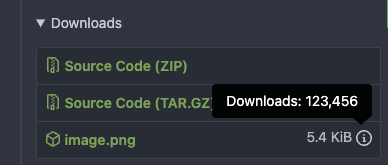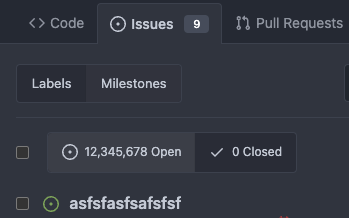mirror of
https://codeberg.org/forgejo/forgejo.git
synced 2024-06-10 17:39:32 +00:00
Follow #21429 & #22861 Use `<gitea-locale-number>` instead of backend `PrettyNumber`. All old `PrettyNumber` related functions are removed. A lot of code could be simplified. And some functions haven't been used for long time (dead code), so they are also removed by the way (eg: `SplitStringAtRuneN`, `Dedent`) This PR only tries to improve the `PrettyNumber` rendering problem, it doesn't touch the "plural" problem. Screenshot:  
21 lines
1.1 KiB
JavaScript
21 lines
1.1 KiB
JavaScript
// Convert a number to a locale string by data-number attribute.
|
|
// Or add a tooltip by data-number-in-tooltip attribute. JSON: {message: "count: %s", number: 123}
|
|
window.customElements.define('gitea-locale-number', class extends HTMLElement {
|
|
connectedCallback() {
|
|
// ideally, the number locale formatting and plural processing should be done by backend with translation strings.
|
|
// if we have complete backend locale support (eg: Golang "x/text" package), we can drop this component.
|
|
const number = this.getAttribute('data-number');
|
|
if (number) {
|
|
this.attachShadow({mode: 'open'});
|
|
this.shadowRoot.textContent = new Intl.NumberFormat().format(Number(number));
|
|
}
|
|
const numberInTooltip = this.getAttribute('data-number-in-tooltip');
|
|
if (numberInTooltip) {
|
|
// TODO: only 2 usages of this, we can replace it with Golang's "x/text/number" package in the future
|
|
const {message, number} = JSON.parse(numberInTooltip);
|
|
const tooltipContent = message.replace(/%[ds]/, new Intl.NumberFormat().format(Number(number)));
|
|
this.setAttribute('data-tooltip-content', tooltipContent);
|
|
}
|
|
}
|
|
});
|